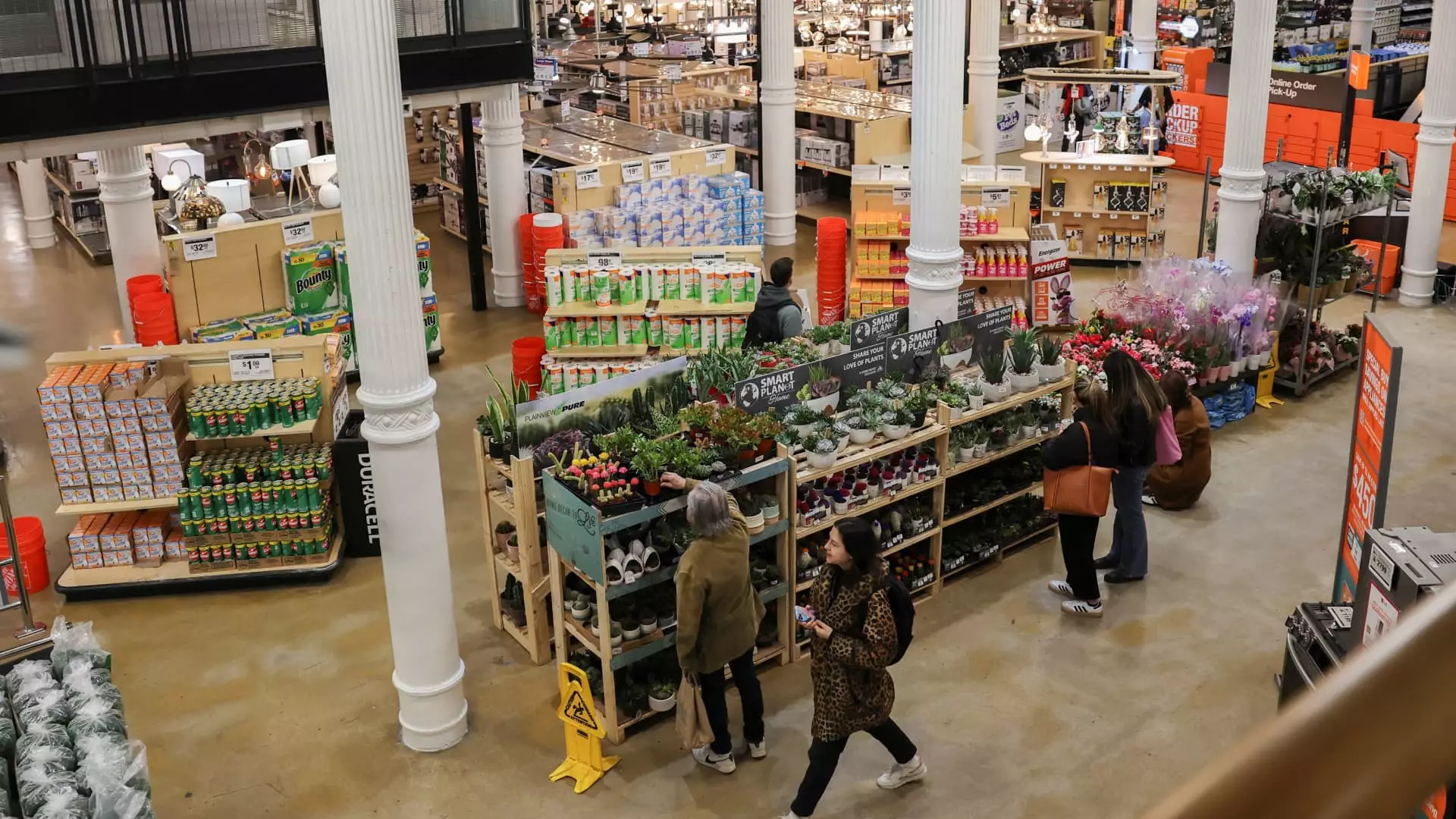In recent months, a considerable shift in consumer sentiment has emerged, particularly impacting high-income earners’ spending habits on home improvement projects. This trend is not just a temporary anomaly but a potential warning sign for major players like Home Depot. The decline in big-ticket sales is supported by alarming data from the University of Michigan’s consumer sentiment survey, which revealed the sharpest drop in consumer confidence among the wealthiest 33% of earners in over 15 years, except for the early months of the COVID pandemic. Such shifts are critical because they hint at a broader erosion of confidence that can lead to decreased spending on necessary home improvements—a sector that thrives on substantial investments. What was once thought to be a robust category is suddenly on shaky ground, with analysts suggesting possible weakness in home improvement sales extending into the first half of 2025.
Market Volatility and Tariff Implications
Home Depot’s stock, while up 3% on a recent Monday, is down 7% year-to-date, emphasizing a volatile market that seems to react sharply to external pressures. Analysts at Piper Sandler have recently revised their price target for Home Depot downward to $418 per share, a reflection not just of consumer sentiment declines but also the persistent impact of tariffs on costs. Tariffs address a much larger issue affecting margins and pricing strategies for home improvement retailers. The ongoing uncertainty surrounding global trade policies can compound difficulties, and in a sector that thrives on stable economic conditions, this can be detrimental. Compounding these challenges is the recent drop in demand reported in the Mattress Retailer Survey, which serves as an ancillary indicator of broader retail health. If consumers are revising their spending habits downwards in unrelated sectors, it raises questions about their willingness to invest in substantial home improvement projects.
Long-Term Stability or Short-Term Woes?
Piper Sandler, despite the troubling short-term projections, expresses some optimism about the longer-term potential for the home improvement sector. Signs indicate that larger renovation projects could stabilize by 2025, largely driven by improving economic indicators such as the NAHB’s Remodel Market Index. Moreover, an uptick in cash-out refinances and home equity lines of credit can potentially furnish homeowners with the funds they need for renovation, but this is a double-edged sword. While these trends may seem promising, they hinge on the assumption that interest rates will remain favorable. In a climate where economic conditions are already teetering, betting on stability in a future fraught with uncertainty holds a level of risk that investors need to consider carefully.
Jim Cramer’s Optimism: Is It Misplaced?
While financial commentator Jim Cramer maintains a buoyant outlook for Home Depot, it is essential to dissect this optimism critically. Cramer’s consistent support for Home Depot suggests a faith in its ability to outperform rivals like Lowe’s, which he attributes to Home Depot’s focus on professional and large-ticket remodel spending. Yet, is this a premature embrace of optimism? Home Depot’s CEO, Ted Decker, seems unfazed by current economic uncertainties, asserting that the company has a history of navigating through tumultuous waters. However, this resilience hinges on the company’s capacity to adapt swiftly to evolving market conditions. Strong leadership alone does not guarantee success; external factors can swiftly derail even the most well-executed strategies.
The Aging Population and Future Demand
Interestingly, analysts at Mizuho mention an aging population of seniors with older homes as a catalyst for future home improvement spending. While this demographic shift does indicate a potential increase in demand for renovations and repairs, relying solely on this trend overlooks critical obstacles—such as price sensitivity and economic worries that could disproportionately affect fixed-income seniors. If the next generation of homeowners adopts a more cautious approach to spending, believing that home improvements can wait, the optimistic forecasts could very well fizzle. This raises questions about the sustainability of Home Depot’s reliance on demographics alone as a safeguard against declining consumer sentiment.
Competitive Landscape: Challenges Ahead
The home improvement landscape is becoming increasingly competitive, with ongoing mergers and acquisitions (like James Hardie’s planned acquisition of Azek) reshaping market dynamics. These developments could potentially reinforce the strength of established players while simultaneously posing threats to others, including Home Depot. Instead of merely assuming that Home Depot will thrive in a changing environment, stakeholders must recognize the complexities that lie in both competitive threats and consumer behavior changes. Cramer’s sentiment may resonate with some investors, but to ignore the underlying vulnerabilities in the macroeconomic landscape might lead to complacency. In an environment where the tides are shifting dramatically, reactive strategies will be crucial for Home Depot’s short-term and long-term success.

